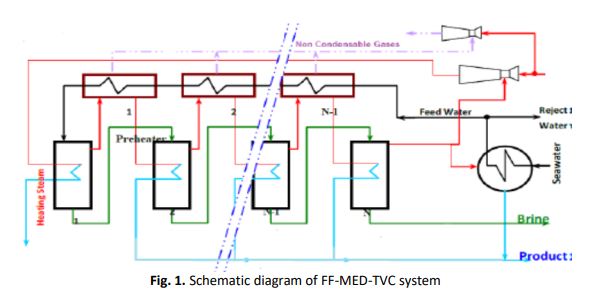Dynamic Modeling and Simulation of the forward Feed MED-TVC Desalination Plant
DOI:
https://doi.org/10.37934/arfmts.92.1.190211Keywords:
Dynamic Modeling, Desalination, Forward Feed, MED-TVC, SimulationAbstract
The sudden disturbances in the operating parameters of desalination plants are common, especially when these plants are integrated with concentrated solar power (CSP). These disturbances damage the plants over time and may lead to a complete shutdown. This paper aims to investigate the performance of a forward feed multi-effect distillation plant with a thermal vapor compressor (FF-MED-TVC) which has a high potential for integration with concentrated solar power (CSP). However, the fluctuation and instability of solar energy require the development of dynamic model for the MED process to analyze the transient behavior. Few papers were published in the transient state, especially the forward feed (FF) configuration, as most of the papers focused on the parallel feed (PF) and parallel cross feed (PCF) configuration. Accordingly, a mathematical model has been developed using Engineering Equation Solver (EES) software and validated against data reported from two previous models in the literature, where a perfect agreement was obtained. Then the proposed model was employed to predict the system's response to the most important parameters that may change suddenly in the real operating environment, such as the variation in the motive steam pressure, feed seawater mass flow rate, and temperature. For the same percentage (10%) of these three disturbances, the results indicated that the needed time to return to 95 % of steady state is the longest in the case of increasing the seawater mass flow rate (about 350 seconds after the turbulence is removed), while it is the shortest in the case of increasing the pressure of motive steam (about 50 seconds after the turbulence is removed). In this paper, a comprehensive analysis of the transient performance was performed and a clearer view of the dynamic response was given which enables to optimize the control strategy and improve the stability.
Downloads

































